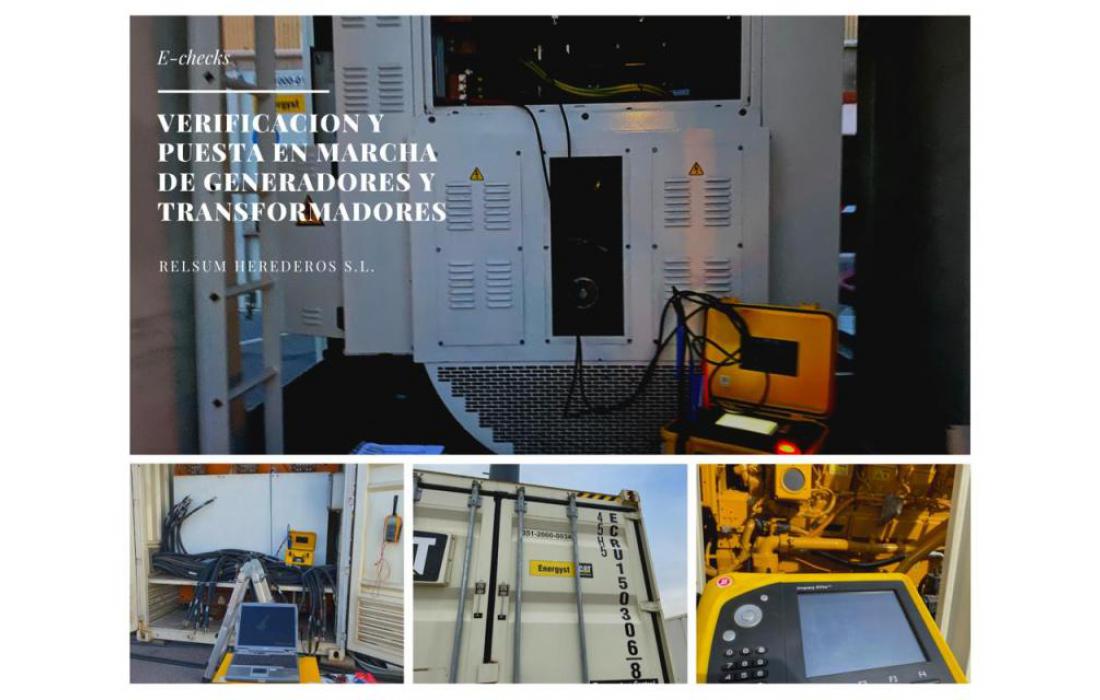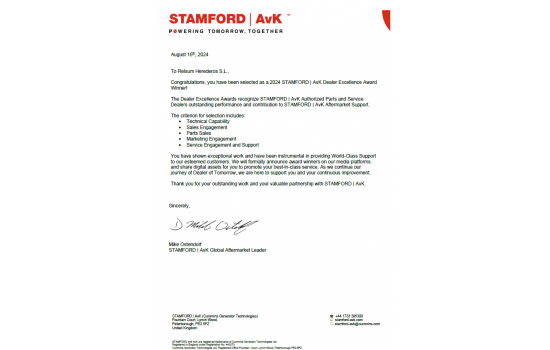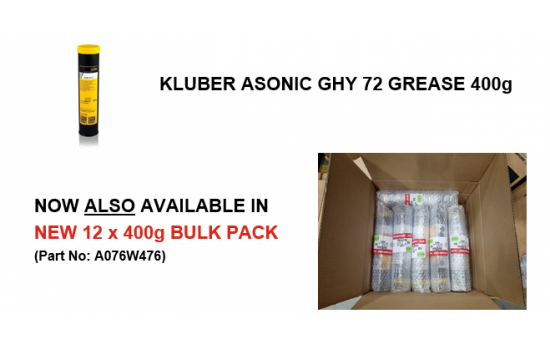
Battery of e-checks tests on alternator and genset transformer.
Technical engineer from the RELSUM HEREDEROS Diagnostic Testing Department collected the insulation signatures and visual inspection in order to analyse and diagnose the state of 2 motor-generators and a 4 MVA transformer located in the CLIENT's facilities.
Access was gained to all the measurement locations and insulation measurements were taken of the machines detailed in the bulk of the report on the aforementioned dates.
The units are located in the CLIENT plant (outdoor area) and the tests were carried out in adverse environmental conditions, with a high percentage of relative humidity and even rainy days on the first day, and as we know, the temperature causes the insulation resistance value to vary according to an almost exponential law. The 1,000 KVA unit is started up prior to testing, the 2,000 KVA unit is not possible due to a failure in the cooling system, and is started up later to measure vibrations and take thermographic measurements.
As part of a preventive maintenance programme, measurements should be taken at similar temperature conditions or, if this is not possible, corrected to bring them closer to reference temperature conditions. As an example and quick approximation, a 10 °C increase results in a halving of the insulation resistance and conversely, a 10 °C decrease in temperature doubles the insulation resistance value. The humidity rate influences the insulation depending on the level of contamination of the insulating surfaces. Care should always be taken not to carry out an insulation resistance measurement if the temperature is below the dew point.
Study of the test currents
- The capacitive load current, corresponding to the load of the insulation capacity tested. This current is transient, relatively high at the beginning, and decreases exponentially towards a value close to zero once the tested circuit is electrically loaded (similar to a capacitance load). After a few seconds or a few tens of seconds, this current is negligible compared to the current being measured.
- The absorption current corresponds to the energy input necessary for the molecules of the insulator to reorient themselves under the effect of the applied electric field. This current decreases much more slowly than the capacitive charging current and requires more minutes to reach a value close to zero.
- Leakage current or conduction current. This current indicates the quality of the insulation, it is stable over time.
The total current flowing through the insulation under test is therefore variable over time, which implies a large variation resulting from the insulation resistance value as the circuit is supplied with constant voltage.




